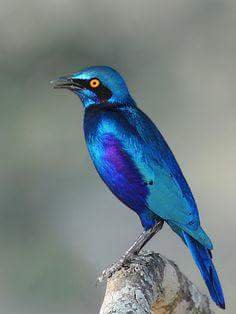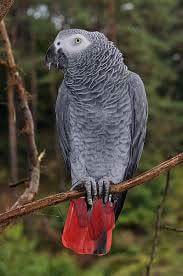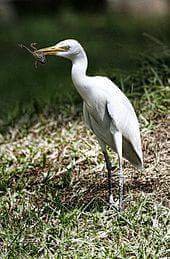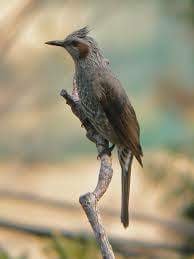 An Intro...
An Intro...
The artistic acumen of the Yorùbá is undisputable. Their contributions to the world culture have been well catalogued in pottery, wood carving, bead making, leather work, terracotta, brass work, metal and stone sculpture, mat weaving, blacksmithing, gourd decoration, cloth weaving and pattern cloth dyeing - Àdìrẹ. 
Àdìrẹ, however stands out in that the creative mindset that goes into creating it draws largely from the environment and the culture (legends, aphorisms, history, proverbs and folklores) of the people.
The etymology of the word Àdìrẹ shows that it is coined from two words - “Àdì” (to tie) and “rẹ” (to dye) - meaning “that (i.e. cloth) which is tied and dyed”. The art of Àdìrẹ is arguably the most decorative of all Yoruba artistic endeavours. 
The design of Àdìrẹ is a cerebral activity. The patterns on an Àdìrẹ cloth serve as an effective means of communication just like Àrokò (see previous posts on Àrokò). The patterns epitomise a visual language.
For several years, foreign scholars (e.g Lenor Larsen, Alfred Buhler, Claire Polakoff) have held the opinion that Adire was discovered by accident! Yoruba oral traditions refutes this opinion robustly as exemplified in the verses from Èjì-Ogbè epistle. 
Six well known birds in Yorubaland (i.e. nature) provided the initial inspiration in designing the Àdìrẹ. These birds are:
Agbe - the Greater Blue-eared Glossy Starling (Lamprotonis Chalybaus),
Àlùkò - the Carmine Bee-eater (Merops Nubicus),
Odídẹrẹ́ - the African Grey Parrot (Psittacus Erithacus),
Àkùkọ - the big and majestically gaited Cock,
Lékeléke - the Cow Egret (Ardeola Ibis)
Àgbùfọn - the big Black Crowned Crane (Balearica Pavonina)
The birds are known for their: indigo, camwood, palm oil, chalk and varicoloured pigments
Èjì-Ogbè says...
Ifá ni o di ọ̀gbọ́ndá
Mo ni o di ọ̀gbọ̀nfọn
Wọ́n ni ẹyẹ wo ni n da t’Olodumare si rere
Wọ́n ni ẹyẹ Agbe ni
Wọ́n ni ki ẹ wi fun Agbe ko fi ‘yẹ́ ti ẹ s’aro
Ifá ni o di o ọ̀gbọ́ndá
Mo ni o di ọ̀gbọ̀nfọn
Wọ́n ni ẹyẹ wo ni n da t’Olodumare si rere
Wọ́n ni ẹyẹ Àlùkò ni
Wọ́n ni ki Àlùkò fi ìyẹ́ ti ẹ s’ osùn
Ifa ni o di ọ̀gbọ́ndá
Mo ni o di ọ̀gbọ̀nfọn
Wọ́n ni ẹyẹ wo ni n da t’Olodumare si rere
Wọ́n ni ẹyẹ Odídẹrẹ́ ni
Wọ́n ki ẹyẹ Odídẹrẹ́ o fi iyẹ ti ẹ si epo pupa
Ifá ni o di ọ̀gbọ́ndá
Mo ni o di ọ̀gbọ̀nfọn
Wọ́n ni ẹyẹ wo ni n da t’Olodumare si rere
Wọ́n ni ẹyẹ Lékeléke ni
Wọ́n ni ki Lékeléke fi ìyẹ́ ti e si ẹfun yẹruyẹru
Ifá ni o di ọ̀gbọ́ndá
Mo ni o di ọ̀gbọ̀nfọn
Wọ́n ni ẹyẹ wo ni n da t’Olodumare si rere
Wọ́n ni Àkùkọ oyongoloto ni
Wọ́n ni ki Àkùkọ oyongoloto maa d’ade yanranyanran
Ifá ni o di ọ̀gbọ́ndá
Mo ni o di ọ̀gbọ̀nfọn
Wọ́n ni ẹyẹ wo ni n da t’Olodumare si rere
Wọ́n ni Àgbùfọn oyongoloto ni
Wọ́n ni ki oun ma dade ori yẹtuyẹtu
Wọ́n ni k’ẹyẹ k’ẹyẹ ko ma ke magbo mọn
Ọ̀pẹ́ẹ́rẹ̀ nikan lo ke magbo
Wọ́n ni ki wọ́n ge ni’ di ofiiri jape jape
Àwọn lo ṣe ’fá fun Òrúnmìlà
Ifá n fi omi ojú ṣe rahun aje suurusu
Ẹbọ ni wọ́n ni ko ṣe
O si gbe ‘bọ n bẹ oru ‘bọ
Njẹ bi okan yo a gb’ona wa,
Atare atesa nwa mi bo wa o suurusu
Translation...
Ifa says it is original and unique
I say it becomes worthy of being imitated
It was inquired, which of the birds wishes to distinctively portray the Almighty’s Creation Will
They said it is Agbe, the Greater Blue-eared Glossy Starling (Lamprotonis Chalybaus)
It was then decreed that Agbe be directed to dip its plumage in (indigo) dye.
Ifa says it is original and unique
I say it becomes worthy of being imitated
It was inquired, which of the birds wishes to distinctively portray the Almighty’s Creation Will
They said it is Àlùkò , the Carmine Bee-eater (Merops Nubicus)
Àlùkò was directed to put its own plumage in the camwood paste.
Ifa says it is original and unique
I say it becomes worthy of being imitated
It was inquired, which of the birds wishes to distinctively portray the Almighty’s Creation Will
They said it is Odídẹrẹ́, the African Grey Parrot (Psittacus Erithacus)
They said Odídẹrẹ́ should put its tail feathers in the (crimson-coloured) palm oil.
Ifa says it is original and unique
I say it becomes worthy of being imitated
It was inquired, which of the birds wishes to distinctively portray the Almighty’s Creation Will
They said it is Lékeléke, the Cow Egret (Ardeola Ibis)
Lékeléke was asked to dip its own plumage in the immaculate and powdery white chalk.
Ifa says it is original and unique
I say it becomes worthy of being imitated
It was inquired, which of the birds wishes to distinctively portray the Almighty’s Creation Will
They said it is Àkùkọ Oyongoloto, the big and majestically gaited Cock
Àkùkọ Oyongoloto was granted the privilege of donning the glittering red crown.
Ifa says it is original and unique
I say it becomes worthy of being imitated
It was inquired, which of the birds wishes to distinctively portray the Almighty’s Creation Will
They said it is the big Àgbùfọn, the big Black Crowned Crane (Balearica Pavonina)
Àgbùfọn Oyongoloto was permitted to wear fluffy variegated crown.
It was thereafter forbidden of any other bird(s) to authoritatively boom and appear distinctively,
Only Ọ̀pẹ́ẹ́rẹ̀, the Brown-eared Bulbul (Microscelis Amaurotis), chirped and attempted uniqueness
And it was ordered that its tail be clipped very short
These were the priests that divine for Orunmila
When Ifa (Orunmila) was profusely weeping in desperate need of earnings
He was advised to offer sacrifice
He offered the prescribed sacrifice
And so whenever Okan, the River Bushwillow (Combretum Erythrophyllum) emerges (sprouts) it comes in ornate patterns.
Both good (novel) and uniqueness shall seek me profusely.
References:
Areo, M. O and Kalilu R.O (2013). "Origin of and Visual Semiotics in Yoruba Textile of Adire" Arts and Design Studies Vol.12
Polakoff, C. (1982). African Textiles and Dyeing Technique. London and Henley: Routledge and Kegan Paul. p.24.
Larsen, Jack Lenor: (1976). Tie Dyers' Art: Ikat, Batik, Plangi. New York: Van Nostrand – Reinhold. ~Olobe Yoyon